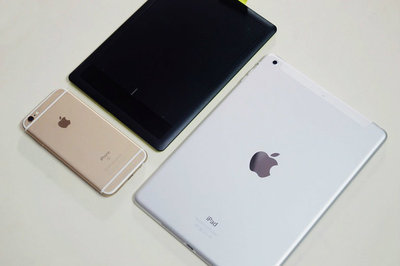Mobile EHR predictions for the next five years
Mobile technology has become deeply engrained in our everyday lives due to more sophisticated and practical mobile applications and with the decrease in cost of mobile devices.
As such, mobile device adoption in the healthcare community has progressed at a rapid pace over the last five years. A 2017 report published by Pew Research reports that the share of Americans that own smartphones are now 77% while roughly half now own tablet computers up from 35% in 2011. Given the pervasiveness of consumer mobile technology, will this trend translate to mobile technology in healthcare.
The current state of mobile EHR use
Received wisdom instructs that healthcare has lagged slightly behind technology adoption trends among the general population. However, the adoption of mobile EHR technology has occurred at a more rapid rate when compared to the adoption of other technologies.
Survey evidence supports this theory. A recent survey by healthcare data analytics firm HIMSS Analytics indicates that over 70% of the providers they surveyed use smartphones and tablets to gain access to clinical and non-clinical information, as well as getting access to their in-house EHR.
Find mobile EHR vendors to suit your practice using this free online software comparison tool
A more nuanced look at how providers are using mobile technology is found in a recent report by technology research firm, Wolters Kluwer which reveals: 72% of physicians access to drug information from smartphones; 63% of physicians access medical research from tablets. 44% of physicians communicate with nurses and other staff from smartphones.
The reason underlying this more rapid rate of adoption among mobile applications is because a vast majority of employ some form of EHR in their practice, as such adding in some form of mobile EHR technology to complement existing technology does not require a significant change in technology strategy given that most mobile EHRs can serve as an add-on to existing EHR.
However at this stage survey findings reveal that mobile EHR is restricted to enhancing workflows, but has not been employed meaningfully in more advanced uses such as patient engagement and population health monitoring.
How will mobile EHR use develop in the next five years?
Given that current mobile EHR use presently centers on using this technology as a way to enhance current workflows by allowing clinicians to access and input clinical information and communicate with other staff and patients while not being tethered to a desktop computer.
However, when looking at surveys of providers as to the direction they would like to see mobile health applications develop, these survey data reveal providers would like to see mobile EHRs continue in the direction of helping clinicians improve workflows.
For example the HIMSS survey cited above indicates providers would like to see mobile EHRs offer more enhanced communication with patients, order entry, discharge planning, and medication administration scanning and documentation.
Investment data in the mobile health space reveal the investment in mobile health startups reached a record level in 2016 $1.3 billion occupying one-fifth of all healthcare IT funding. according to data compiled by Mercom Capital Group. Without a doubt the space is growing, however where it will move remains an intriguing question.
Possible areas of expansion
Areas of mobile health that saw the most activity and could provide an indication for where the mobile EHR market could be moving in the next five years. According to technology business analytics firm CB Insights areas of the mobile EHR space that saw the most activity were:
- Telemedicine: mobile applications that allow remote communication with a clinician
- Chronic disease management: mobile applications that allow a patient to manage and collect data on chronic health conditions and share information with their provider’s EHR
- Patient engagement: mobile platform focused on allowing patients and providers to coordinate appointment booking, medication orders, and medical record storage
The mobile EHR space appears to be headed in a direction that focuses on assisting patients receive care and manage their conditions remotely, while also allowing them to coordinate more effectively with their providers. Although clinicians appear to desire more mobile applications that can solve workflow solutions, the direction mobile EHRs appear to be heading may at least partially accomplish this goal.
Free white paper

EHR Vendor Directory
Get the most up-to-date directory of EHR software vendors. Find the best software for your practice.

Featured white papers
Related articles
-

iOS and Android mobile EHR apps: everything you need to know
Everything you need to know about mobile EHR - features, benefits, recommended apps and more
-

How to sell cloud EHR to practice management
Practice managers can be cautious when it comes to cloud EHR - here's how to ease their fears
-

Health apps, wearables and the potential for EHR integration
Could health apps and wearable health technology be integrated into EHR software? We look at some...



